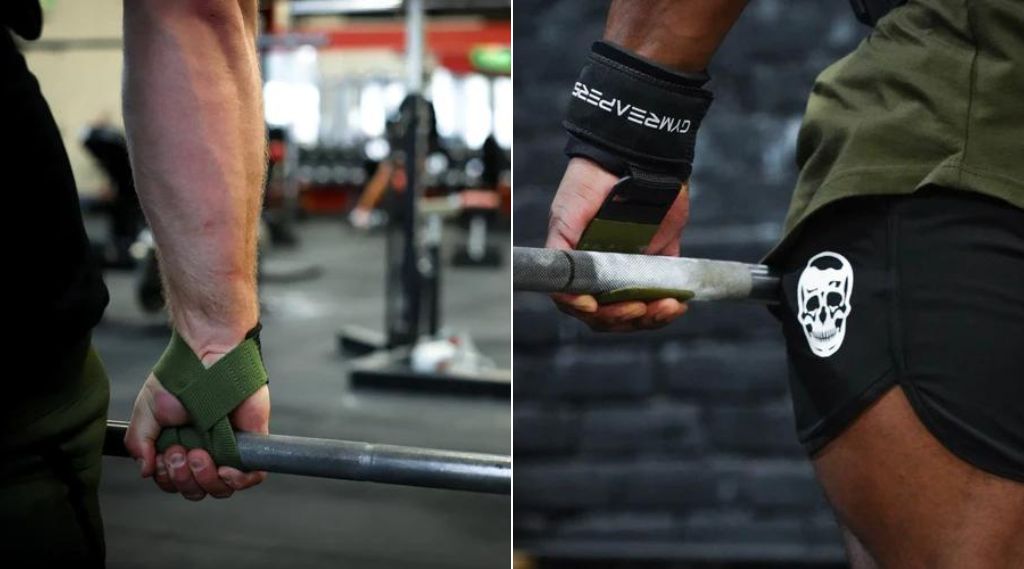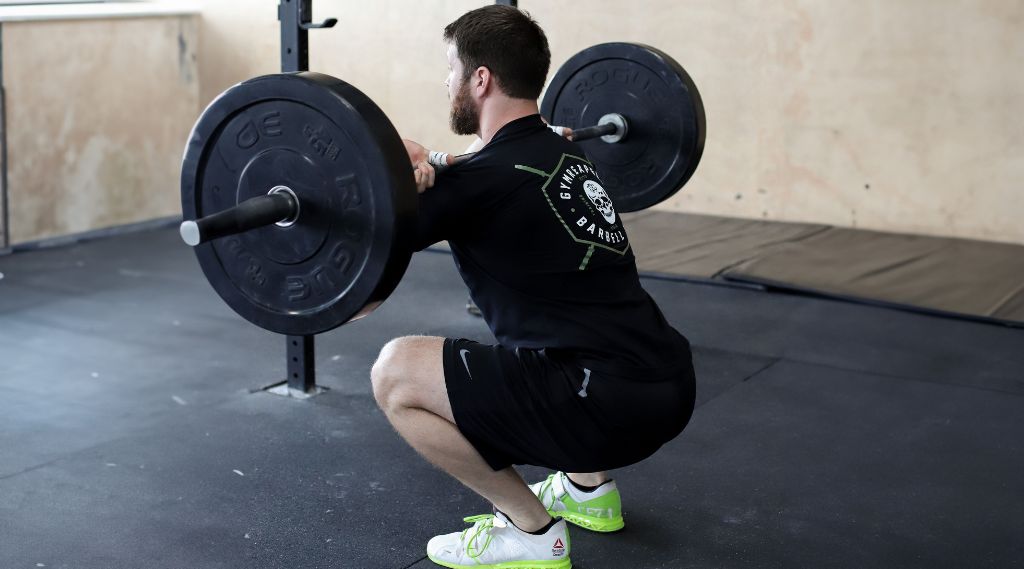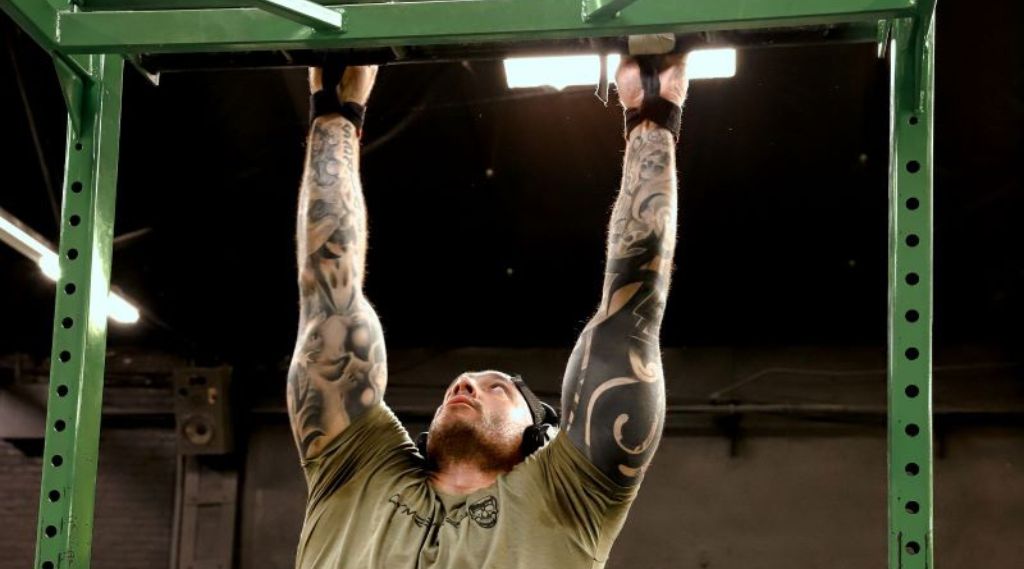If your grip is a limiting factor that prevents you from lifting heavier or targeting the right muscles, then you may be interested in lifting straps and lifting hooks.
So, which is the better choice?
Lifting straps are the better choice for the majority of people. Although you need to learn how to use lifting straps properly, which might take some practice, they are more versatile, cheaper, safer, and more comfortable to use than lifting hooks.
In this article, I will explain the differences between straps and hooks in detail, and break down the benefits and drawbacks of each so that you can make a more informed decision about which option is best for you.
Key Takeaways
- Lifting straps can be used for deadlifts, rows, and pull-ups as well as dynamic movements like cleans and snatches.
- Lifting hooks have a weight limit, usually around 300-400 lbs, which makes them a poor option for more advanced lifters
- Lifting straps are the better choice for most lifters looking to improve their grip in the gym, but hooks are still a great piece of equipment for newer lifters who want to use them for deadlifts, barbell rows and shrugs.
Differences Between Lifting Straps & Hooks

The main differences between lifting straps and hooks are:
Versatility
One of the main differences between lifting straps and hooks is the versatility of each piece of equipment.
This difference mainly stems from the fact that lifting straps securely wrap around the item you are trying to grip. Your hand becomes very tightly tied to the bar while still allowing your fingers to grip around the bar too, which removes any risks of slipping.
Hooks, on the other hand, do not tightly wrap around the bar and prevent your fingers from also gripping the bar.
This difference means that lifting straps can be used for essentially any conceivable movement where you are trying to improve your grip on something.
They can be used traditionally for movements like deadlifts, pull-ups, and rows, but they can also be used for more dynamic movements where the weight moves in different directions, such as curls, snatches, or power cleans.
Lifting hooks do not offer this same versatility, as they primarily need to be used in movements where the weight is not at risk of falling out of the hook, such as pull-ups, deadlifts, and barbell rows.
Weight Limit
Another difference between the two is the imposed weight limit on the piece of equipment.
Lifting straps have no weight limit, and can essentially hold onto any weight that you can lift.
Here is an example of Jamal Browner deadlifting, and holding comfortably, 1,102 pounds with lifting straps:
On the other hand, lifting hooks have weight limits, which are generally 300-400 lbs. These weight restrictions severely limit how much weight/how many exercises you can use this equipment for.
It is possible to go beyond these weight limits, but you run the risk of durability becoming an issue, or the weight rolling out of the hook if your barbell rotates. Both of these risks can cause the weight to drop unexpectedly, which can injure you.
Ease of Use
A final difference is the ease of use between straps and hooks.
Lifting straps take longer to get used to and also take longer to set up and wrap securely around the bar.
On the other hand, because you don’t have to take the time to wrap them around the bar and tighten your grip, lifting hooks are much more intuitive and are very quick and easy to secure to the bar before you lift it.
Lifting Straps

Lifting straps are a grip-enhancing tool that is used by almost every type of strength athlete, including powerlifters, Olympic weightlifters, Crossfitters, bodybuilders, and strongmen.
They are essentially long pieces of fabric that you loop around your wrist, and then loop again around whatever you are trying to hold onto. This cinches your hand to the barbell and makes it almost impossible to let go of the weight.
They are very helpful for supporting your grip, and they are most commonly used to hold onto heavy barbells or dumbbells in movements where your grip might be a limiting factor.
Benefits
The main benefits of lifting straps are:
- Safety. Lifting straps are much more foolproof than lifting hooks, and they are much less likely to fail suddenly and force you to drop the weight you are trying to lift. They are very durable and can handle essentially any weight capacity.
- Comfort. Lifting straps are typically made out of comfortable material with padding along the wrist loop. This mitigates the potential to dig into your wrist as you’re lifting heavy loads.
Additionally, gripping the material of your strap, instead of the harsh knurling of the weight you are lifting is often a much more pleasant experience.
- Versatility. Lifting straps are extremely versatile and can essentially be used to do any exercise where grip strength could be a limiting factor.
This can include basic compound movements like deadlifts and rows, but your straps will also help you in bodyweight movements like dips or more complex movements like power cleans and snatches.
- Cheap and Lightweight. Lifting straps are typically cheaper than lifting hooks, which makes them more accessible. They are also very lightweight and compact so they’re easy to travel with.
- Protect your Hands. A final major benefit to lifting straps is that they can protect your hands from developing calluses.
Lifting straps will slow down the process of building calluses because your skin is no longer in direct contact with knurled metal. As such, friction will be between the strap and the bar, rather than between your hands and the bar.
Drawbacks
The drawbacks of lifting straps are:
- Steeper Learning Curve. It can take a while to learn how to use lifting straps properly. It generally takes a few attempts to wrap the strap around the barbell properly.
The key mistake people make is wrapping their strap “over the barbell” instead of “under the barbell.” When wrapping your strap, always loop under the barbell first. In other words, the bar wrap should loop away from you, and then come back towards you over the bar.
- Takes Longer to Set Up. A second drawback is that lifting straps take longer to set up and cinch properly than using your bare hands or a lifting hook. This will take extra time and effort at the start of your sets.
This can especially be a problem if you prefer a “top-down” setup for deadlifts. This simply means you prefer to take your breath, set your brace, and get tight at the top of the lift before you bend down to grab the bar.
- Potential for Over-Reliance. A final drawback to using lifting straps is the potential for becoming over-reliant on them. Becoming over-reliant simply means that you likely cannot lift a weight unless you have your special piece of equipment with you.
Over-reliance can be a killer if you compete in any strength sports because you can’t use straps in competition.
This is why I recommend pulling your heaviest and most challenging sets without straps to ensure you can hold the weight, and then use straps on your backdowns and accessory movements to save your hands and forearms.
Who Should Use Them
Any lifter looking to immediately improve their grip strength on heavy compound movements should consider using lifting straps.
I recommend lifting straps for all lifters, regardless of their goals or experience level. You won’t need them all the time, but when you do, you’ll be able to lift more weight safely and push yourself harder in the gym.
You’ll be able to do all of this while ensuring you’re training the muscles you actually want to develop, without the constant fear of your grip giving out at any time.
Lifting Hooks

A lifting hook is another solution for people that struggle with their grip strength in the gym.
Lifting hooks typically make use of a velcro strap that wraps around your wrist, and then include a metal hook that curves underneath the barbell (away from your body).
This hook serves to shift the loading demand from stressing your hands, to your wrist. This happens because your hands are essentially being taken off the barbell when using lifting hooks.
This eliminates any tension through your hand or forearm and makes the bar feel like an extension of your wrist and forearm.
Benefits
The benefits of using lifting hooks include:
- Easier to Learn. Unlike straps, hooks are more intuitive as you simply need to strap them around your wrist and then bend down to pick up the weight as you normally would.
Instead of grabbing the weight with your fingers, you use the hook like a claw and then “scoop” the weight up.
- Faster to Secure. Lifting hooks secure to a barbell very quickly, so you don’t have to waste time fiddling with your equipment to make sure that you are secure.
Drawbacks
The drawback of using lifting hooks are:
- Uncomfortable. Lifting hooks are much more uncomfortable than lifting straps. While straps have the nice padding and support that I mentioned above, hooks are less ergonomic and are made of material that will dig into your skin over time.
- Less Secure and Reliable. Since the equipment does not wrap all the way around the bar like with a lifting strap, lifting hooks are much less secure. There is a definite risk of the weight rolling out of your hook, which will cause it to fall and could cause serious injury.
- Weight Limits. Most lifting hooks do have a weight limit. If the model you are looking at doesn’t specify its weight limit, then it is likely around 300 lbs. You can find some heavy-duty lifting hooks that have been tested up to 600 lbs, but they are rare and more expensive.
- Not Ideal for Small Hands. Unless you plan on removing your hand from the barbell entirely and allowing the hook to completely support the weight you're lifting, you will typically need slightly larger hands to keep your fingers in contact with the barbell.
While hooks can theoretically support the entire weight, there is a risk that the bar/weight could slip out of the hooks. I advise that, if possible, you try to share the load of the weight with the hooks by still using your fingers.
However, this will be harder to do if you have smaller hands, due to the hook's bulky design which creates more separation between your hand and the bar.
Who Should Use Them
Lifting hooks are ideal for beginners or individuals who aren’t yet lifting a lot of overall weight (less than 300 lbs).
For these individuals, hooks are a very helpful tool that can be used for deadlift variations, rows, and even shrugs. However, I do not recommend lifting hooks for more dynamic movements (like Olympic lifts), since their grip on a bar is much less secure than lifting straps.
Lifting hooks are still relatively cheap and portable, are faster to use than lifting straps, and are a fairly safe way to improve gripping strength on weights less than 300 lbs.
Lifting Straps Product Recommendation

The Gymreapers Lifting Straps- Premium Padded Weightlifting Straps are one of your best options if you are looking to support your grip, lift more weight, and keep your hands safe.
These straps can help take your training to the next level. They feature Neoprene padding to support your wrists and keep the fabric from digging into your skin. They are also made from very durable cotton material, which ensures elite durability.
These straps boast a “no-slip” factor since each strap is 18” long. This ensures that you have plenty of fabric to securely tighten around the bar for a safer and more comfortable training experience.
These straps are great for general lifters and are intended to be used for powerlifting, bodybuilding, CrossFit, and other weightlifting activities.
Finally, note that these straps are only $23.00, come in 9 colors, and are guaranteed with a lifetime replacement warranty.
Lifting Hook Product Recommendation

The Gymreapers Lifting Hooks are a great choice for those who decide that straps aren’t for them but still want to benefit from a grip-enhancing piece of equipment.
These heavy-duty weightlifting hooks are designed with a durable attachment to the barbell. They provide grip strength relief, allowing you to focus on targeting the muscles you actually want to work, instead of worrying about the weight slipping out of your hands.
They are made with thick padding and a reinforced metal loop that ensures a firm and supportive grip for deadlifting, rowing, or performing other pulling movements.
These hooks are guaranteed to safely hold up to 400 lbs, cost $29.99, come in 6 colors, and also have a lifetime replacement warranty.










Leave a comment
All comments are moderated before being published.
This site is protected by reCAPTCHA and the Google Privacy Policy and Terms of Service apply.